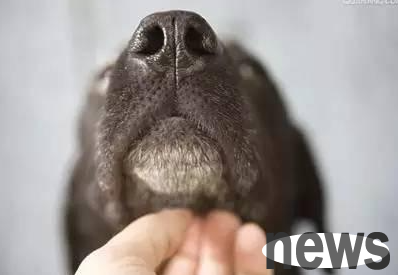Acne is not just a problem for people. Dogs may also be susceptible to them, and if left untreated, they can lead to secondary bacterial infections on the dog's skin. What is acne? papules, or pustules in medical terms, are raised, pus-filled lu...
Acne is not just a problem for people. Dogs may also be susceptible to them, and if left untreated, they can lead to secondary bacterial infections on the dog's skin.

What is acne?
papules, or pustules in medical terms, are raised, pus-filled lumps. They are the result of canine acne, an inflammatory disease, and are usually found on the lips and nose of affected dogs, but can also be found in other parts of the body.
Symptoms of dog papules
Technically, acne itself is considered a symptom of larger canine acne, and you may see other clinical symptoms that appear with them.
Symptoms
·Local hair loss (hair loss)
·Acne/pustular
·Face/muzzle scab
·Swelling of lips/mouth
·Acne scars
·Face friction
Because acne is the result of the inflammatory process, swelling may come from this, and facial friction may also come from this. The inflamed area may itch, causing friction and scratching, resulting in open ulcers. Cracks may be caused by this self-trauma. Once these scab areas also heal, scars will form.
Causes of acne
Dogs' acne is not caused by hormone imbalances like humans. They either come from genetic predispositions or from trauma from hair follicles. Boxers, Bulldogs, Great Dane, Rottweilers and Weimar are some of the more prone dog breeds. Trauma to the dog's muzzle and skin around the lips, whether it is rooted in the soil, or stepping on bowls and toys on the floor, can cause short hairs on the muzzle to fall off near the hair follicles. This in turn causes irritation and further inflammation. During these early stages, the stimulated lesions are usually not infected, but over time, bacteria can penetrate these areas.

Diagnose acne in dogs
Since all the symptoms of a dog are related to the skin, it may be relatively simple to diagnose them. Usually simply observing acne is enough to diagnose. Veterinarians may want to take something called tape preparation to check for secondary bacterial infections, yeast infections, or scabies. This involves pressing a piece of clear tape onto the lesion and squeezing the area to pick up some contents in the surface skin cells and pustules. It was then stained and observed under a microscope to see which organisms exist.
If your dog's acne persists, additional testing may be required. This may include skin abrasions to check for mites that may cause demodex or mange, as well as biopsy of any tumor or cancerous origin. If deep lesions are present and not healed, bacterial culture and sensitivity tests can be performed to determine which bacteria are present and to see which antibiotics best fight them.
Treatment
Like many skin diseases, treatment usually involves topical and systemic or oral medications. Your veterinarian may prescribe a topical preservative, such as chlorhexidine or benzoyl peroxide, to clean the affected area. Both solutions can be purchased over the counter, but some people use the preparations that may be more concentrated, thus having a greater irritation to your dog's skin. Therefore, please consult your veterinarian before using any product.
Oral antibiotics can also be prescribed. For deep infections, it may take 4 weeks or more to completely resolve the issue.
Veter may also prescribe short-term steroids. These are to help reduce any swelling and inflammation. Veterinarians may opt for topical steroids, but they may also choose oral preparations. Oral steroids cannot stop suddenly, so be sure to follow the instructions of your veterinarian. They must also be used with certain drugs with caution, including diuretics such as furosemide and nonsteroidal anti-inflammatory drugs such as Rimadyl (carprofen) and Deramaxx (deracoxib). Be sure to let your veterinarian know all the medications your dog is currently taking, including vitamins and supplements.
Prognosis in dogs with acne
Acne is a common benign problem, so the prognosis is usually good. While this is not usually an emergency, make sure to seek veterinary attention before experiencing more serious underlying symptoms.
How to prevent acne
There are some measures that can be taken to try to reduce the risk of acne in dogs. Wiping the dog's face and facial folds helps prevent dirt and dirt from entering to avoid irritating the skin and hair. There are veterinary wipes that are antibacterial and antifungal, but baby wipes usually do the same. Using stainless steel or ceramic food and water bowls instead of plastic can also help, as some dogs may have contact allergies to plastic.
Acne can cause nuisance to your dog, but rest assured that they may not be a serious illness and can be removed with simple treatment.